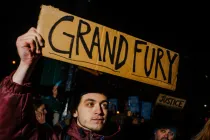On April 17–18, 2015, the International Center of Photography hosted the fifth annual Theorizing the Web conference, which since 2011 has provided a forum for rigorous, socially engaged, inclusive conversations about the Web. We were honored to share our future home on the Bowery with Theorizing the Web co-founders Nathan Jurgenson and PJ Rey, the TtW15 Organizing Committee, and more than 140 participants who presented on topics including: the use of cell phone cameras by both revolutionaries and their governments; the politics of networked policing; cyborg selves in online transgender communities; and the link between technology and pathology. Visit Theorizing the Web online to access to the archived videos of the 2015 conference presentations.
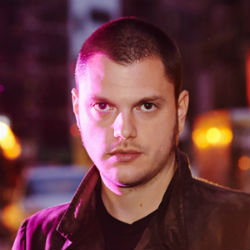
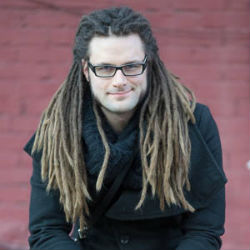
Marina Chao: You launched Theorizing the Web in 2011. How did the two of you meet and come to co-found the conference? What was the impetus? Was there something specific about the kinds of discussions that were happening between academics and artists in your circle in the years leading up to the first conference that made this feel urgent in and around 2010? Did you see TtW as filling some kind of discursive void?
Nathan Jurgenson: I came to the University of Maryland to work with the social theorist George Ritzer. We were working together, thinking about the rise of social media, and I remember I was a first-year graduate student when PJ was visiting programs to decide where he’d go. I think he found this to be interesting work and joined the department the following year. When was that, PJ… 2009 or so? We’d go to conferences on technology and found that they lacked critical, historical, theoretical thought. Theory conferences didn’t take the Internet seriously, and academic work also didn’t engage in the history of social thought and lacked a public engagement and relevancy. It was frustrating; we just wanted people to think together. We wanted a community of peers so we started an academic blog called Cyborgology, and it was PJ who first had the idea of starting a conference.
PJ Rey: I think I visited UMD some time in spring 2008, and I was pretty excited to discover that Nathan was already working with George on the same sorts of questions I was interested in. We hit it off immediately, so it made going to Maryland a pretty easy choice.
As Nathan said, we weren’t having a lot of luck finding events that attracted people talking about race, class, gender, and other social justice issues in relation to the Web. I had some previous experience helping with the annual graduate student philosophy conference at Duquesne University, so I thought maybe we could put together a similar sort of tiny, one-day event around these issues. The response was overwhelming, and, even in that first year, we ended up having many more sessions than we anticipated.
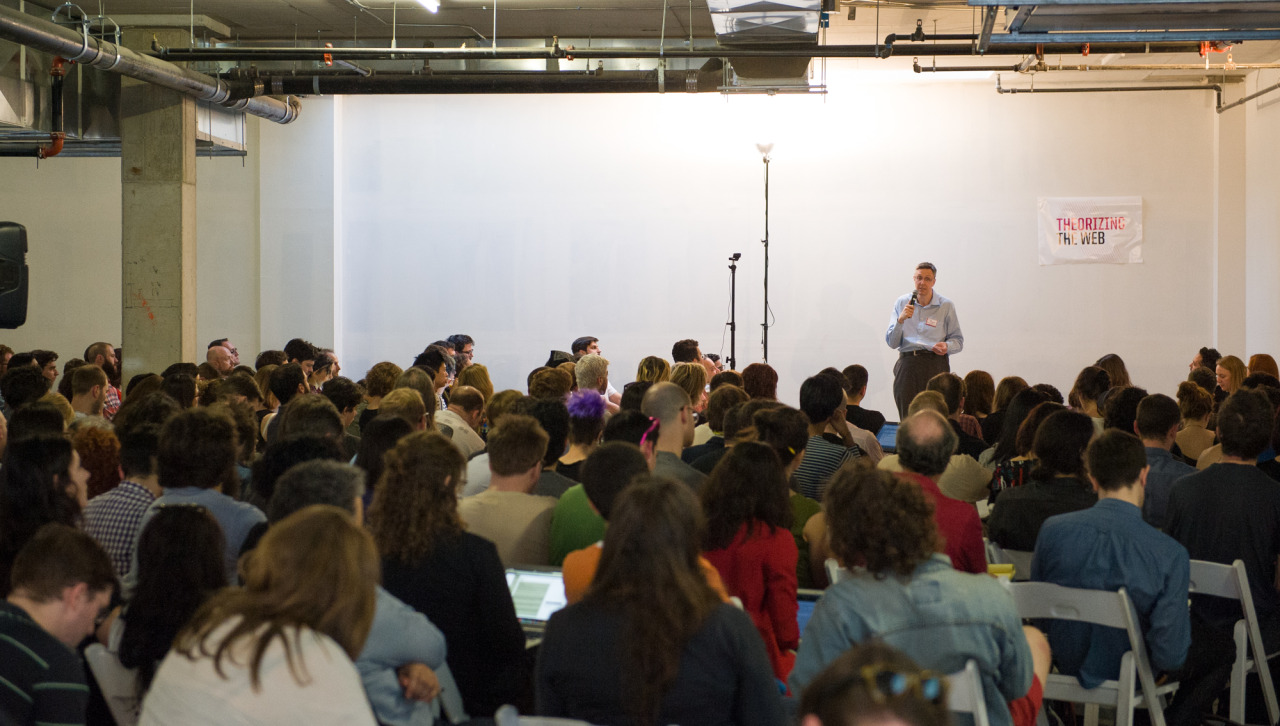
MC: This year’s event at ICP comprised 21 sessions and four keynotes, each on a different theme, including: (In)visibility is a Trap; Code Queering; Photography and Visual Culture; Here Comes Every Body; and Meme, Medium, Mode. What is the organizing principle of the conference? Essays are selected through an open call for papers, is that right? Do themes emerge as you review the submissions? How do you arrive at the final program? For instance, how do you decide what topics constitute a keynote panel?
NJ: The main organizing principle is always to make the conference we’d want to attend. There is no institution that has any editorial control over the event at all. So we can do whatever we want, which often means for us that we can and should do things that only we can do. Well, we don’t really go for conference gimmicks; we have a lot of that well-known 12-minute paper in a four-person panel setup. I think a lot of events, more and less successfully, want to create something new around presentation style, injecting humor, uncommon pairings, rearranging the chairs, stuff like that, which is all fine. We’re more interested in creating a new space for a way of thinking that is smart and public and critical at once, which gives Theorizing the Web its own vibe and tone and community.
PJ: We always put a lot of energy into crafting the call for papers. From talking to past participants, we know it has a huge impact on who feels included and on the sorts of topics the prospective presenters pitch to us. Shortly after the submission deadline, our entire committee reviews the full batch of anonymized submissions. It’s during that process that we get a sense of what themes are emerging in a given year. We try and set up panels in a way that promotes conversations that we think are important but that we haven’t heard enough of.
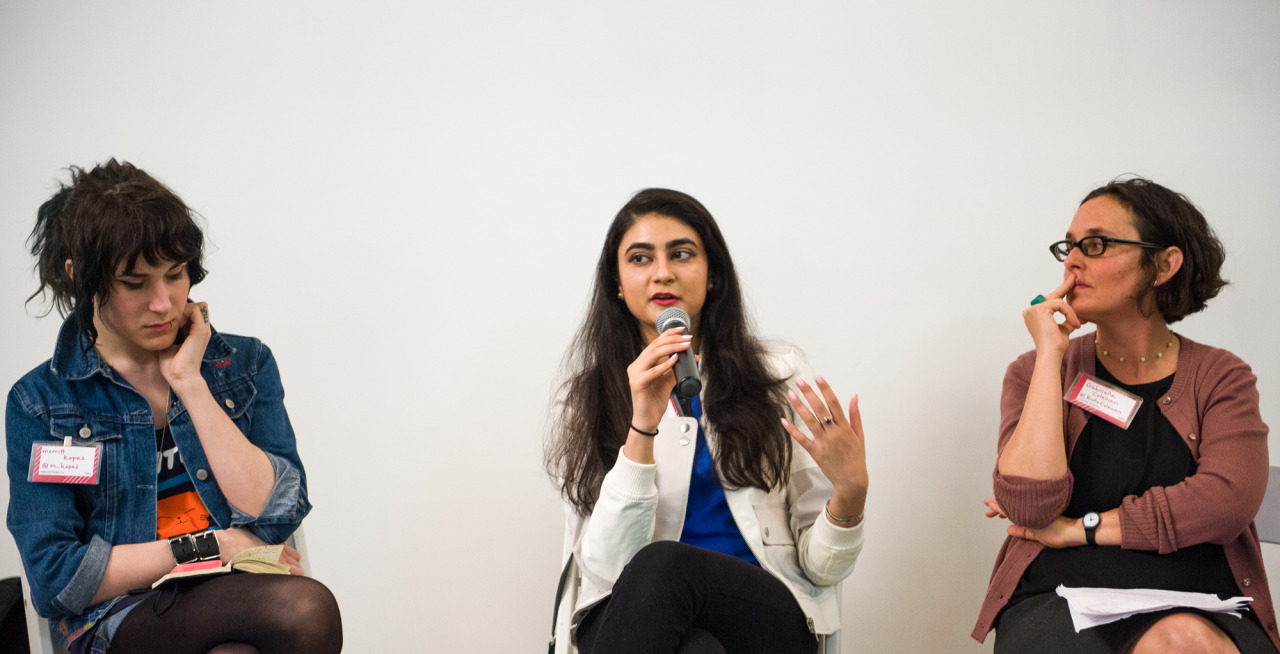
MC: What trends have you seen in the paper topics since the first conference in 2011? How are our 2015 concerns about the internet different from those in 2011? Is it possible to identify a dominant concern or question for each year of TtW? In other words, how cohesive and coordinated is the scholarship about the Web and how quickly is it evolving, from what you’ve seen?
PJ: The Web has been around for more than two decades now and has evolved a great deal. Certainly, it became more accessible to far more people in the 2000s with the rapid growth of social media sites like Facebook and Twitter. It also became more obviously social. Many people were researching and writing about the social aspects of the Web before that, but their work wasn’t being taken as seriously, perhaps because many people still viewed those “digital” social interactions as less real somehow.
On the whole, I would say we’re seeing less written about “virtual worlds” than in the early days of the Web and seeing more about mobile and tracking/surveillance technologies. I think the Web turned out to be less immersive, and more integrative, than early commentators anticipated. By the time we started Theorizing the Web, however, this was already pretty clear.
NJ: We don’t center the event on any specific trend, and while some trends are present in the submissions, it’s pretty subtle. This event isn’t really tied to any trend or news event, and the researchers who present are overwhelmingly interested in entering emerging technologies into the history of social thought, a longstanding conversation in the literature. So the topics don’t change a lot over five years because the topics long predate the Web: identity, visibility, knowledge, power, resistance, bodies, inequalities, and so on. (Aside: the best papers are those that are eloquent on these social theoretical topics and then take on new tech versus the papers that are impressive in their technical knowledge and try to apply that to these social issues.) That said, the so-called Arab Spring in 2011 gave TtW2012 a protest and resistance flavor, and the 2015 event had a spike in interest in algorithms.
.@zeynep opens by referring to her piece on how Facebook's algorithm erased Ferguson ( https://t.co/79bIyqOIUq) #TtW15
— Scott Ross (@scott_a_ross) April 18, 2015
MC: Is there a difference in the kinds of questions that interest presenters who are "digital natives" as opposed to those who are "digital immigrants"? I’m assuming I heard from people who are natives at TtW15. I feel old. While we’re on this topic, what are the most salient differences between these two groups? Are we talking hardwired differences from one generation to another, or is it more a gulf in dexterity and capability?
NJ: Before I can answer, let me express some discomfort with the “natives” term and frame. Both the racial connotations and the idea that young people are somehow intuitive or magical about technologies are problematic. In any case, sure, age, like any social standpoint category, always has an influence on what questions are asked and how they are answered. I think the biggest difference, and I mean with discourse in general instead of TtW speakers specifically, is that older people more often see two realities: the world as they knew it, and then this digital stuff added on—the analog world at Time1 versus T2; the real world versus the virtual world; IRL versus cyberspace; off and online. This zero-sum tradeoff understanding is what I coined the term “digital dualism” to describe, and PJ and I, as well as people writing for the blog and presenting at TtW, have all worked on and from this line of thought. We are mostly critical of this digital dualism, and younger folks need less convincing perhaps because they (we) understand the digital to be a part of everyday life, that the internet interacts with all of social reality, how you see yourself and others and the world, even when you’re not looking at a screen (for better and worse).
PJ: I suspect young people will continue to use digital communication technologies differently, just as they use language differently, and this will always leave parents feeling a little out of the loop. Nevertheless, there are plenty of older people who are very competent with these technologies and who relate to them quite comfortably.
Great talk by Mikhel Proulx about digital natives: claiming indigenous cyberspace, at #TtW15 http://t.co/z18v3Qg0C8 pic.twitter.com/kPJSAwPtSD
— Melissa Mesku (@MelissaMesku) April 17, 2015
MC: Speaking on behalf of ICP, I can say that we were thrilled to host Theorizing the Web in our raw space and see the partnership as a no-brainer, quite symbiotic. It seems a lot of our respective mediums’ conceptual and political aspirations and crises dovetail. Can I ask you to articulate the ways in which what we do as a photography institution and what you at Theorizing the Web do complement each other—why having your conference in our future museum space made sense to you?
NJ: Less important, but still important, was the logistics: a big empty space with no editorial strings attached—that was perfect for TtW! It’s a DIY event: throw some chairs and projectors and wifi in a space, make the registration pay-what-you-can, and it all works out.
More important was the conceptual alignment. I’ve been doing a lot of work on social photography, and it struck me that the professional photography community didn’t engage with or understand the vast majority of photographs being taken today. Fixated on professional art, museum, gallery, photojournalist photography, much of the photo community doesn’t understand or articulate everyday people taking and posting images very well. Meanwhile, social thinkers in general aren’t engaging with the history of thinking about photography, and this is crucial since so much of the social world in influenced by social media and so much of social media is photography. Even more than that, photography is such a useful way to think about what the recent emergence of social media means: photography arrived as a new technology that let you document yourself and your world in new ways, and that is just what social media is, too. So I think the photo world and social researchers in general need to cross paths more, they and their ideas could find productive overlaps, and we are very grateful to ICP not just for providing the physical space but also encouraging these cross-disciplinary collaborations.
"Photography has the power to create a different meaning from the same scene." - @drcab1e talk at #TtW15 conference
— ICP (@ICPhotog) April 17, 2015
MC: A quick question about phone apps. Unsurprisingly, many have to do with image making. I’m interested in how new platforms offer tools that we, as consumers, didn’t even know we wanted. Snapchat didn’t exist four years ago, and now we’ve fully embraced hyper-ephemerality. What would you like to be able to do with your cell phone camera that isn’t yet facilitated by a platform?
PJ: I don’t have a brilliant idea for the next billion-dollar startup, but I’d love to see seamless connectivity between dslrs and smartphones. It’s pretty easy to imagine being able to search the SD card in my camera from my phone, making some quick edits to a photo, then uploading it to social media on the spot. Right now, we’re stuck choosing between the convenience of a built-in camera and the quality of a stand-alone camera.
NJ: I want that, PJ! But also my answer is more annoying:
When it comes to what I want to see people “be able to do” with camera apps, I think the discussion needs to turn a little bit away from technical affordances and features. If photography discussions are going to take photography seriously, then they have to realize that its technical abilities and artistic qualities are not the whole story, but also its role as visual communication, self-presentation, knowledge dissemination, and so on. So what I want people to “be able to do” is use tools designed from this social rather than technical or formally artistic understanding. Instead of design gimmicks, the useful tools are about people better understanding who is seeing their images and for how long; how a network allows or discourages fluid and queer subjectivities versus social ranking and categorization; if people are respecting privacy and consent around visual information. I know the tech press is unwilling to take this perspective, and are pretty unimpressive when they do, but these are the “new features” the photo world should be obsessed with more than the next tilt-shift-near-field-Uber-for-selfies startup.
"photographs are already lies" - @mollycrabapple on photography at #ttw15 pic.twitter.com/y6cs96dEvV
— nathanjurgenson (@nathanjurgenson) April 17, 2015
MC: Museums have in the last several years been addressing more directly the role of digital technologies and the internet (as a tool and as an intellectual commons) in artists’ practice. Nonetheless, the art museum has not traditionally been the space in which to see this kind of work. Net art has a strong presence, naturally online, thanks in large part to Rhizome, but are museums missing something? How could museums be engaging with the things you think about more effectively?
NJ: I think the social media thinkers and writers and the net artists know each other, run into each other, and I don’t get a sense that so far it’s been professionally productive for many folks on either side yet, but it’s happening more. I’ve met many artists who have found our work on the blurring of the digital and material productive from an artistic point of view. And, personally, my own work isn’t about finding the True theory or to make a list of social facts about social media, but instead to describe conceptual frameworks to think with, to see the world through, to try on and see what they might reveal or conceal in useful, political, or pleasurable ways. In this sense, theorizing is similar to artistic practice. But at the present moment, the professional social media research worlds and professional net art worlds only meet at the fringes. Let me be as diplomatic as I can: each world seems perhaps put off by each other’s professional posturing . . . well, I have more very boring thoughts about this, for another time.
MC: Let’s close with some potentially reckless forecasting of the next frontier? What is our relationship to the photographic image in the not-so-distant future?
NJ: Social scientists rarely like to predict the future, but if I were going to, I hope that future social media is better informed by not just engineers and business people but also by those most articulate in describing the social world. Social media mediates things like identity, sociality, information gathering, and so on, but those most expert in these topics are often missing from the conversations that create and maintain these systems. But social media is young, it didn’t need to be made the way it was, and I hope the future of social media design will be better at incorporating competency in not just the media but the social.
PJ: Right, social media plays an increasingly central role in our society. Like government, it’s something we design, and that design incorporates and promotes certain values. My hope is that we begin to collectively discuss it in this way and make deliberate decisions about the sorts of designs we think will promote our democratic values (versus, say, maximizing wealth accumulation for designers and investors).
Nathan Jurgenson is a social media theorist, sociologist, contributing editor at The New Inquiry, and a researcher at Snapchat. Nathan’s work is often critical of the idea that the digital is a separate, virtual, less-than-real world, what he coined “digital dualism” to describe.
PJ Rey is a PhD candidate at the University of Maryland. He is beginning dissertation research examining digitally mediated sex work with a particular interest in how such work is experienced as embodied interaction.



